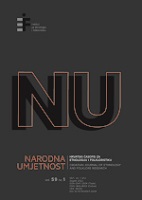17th Century Costuming Features of Korčula’s Moreška
17th Century Costuming Features of Korčula’s Moreška
Author(s): Elsie Ivancich DuninSubject(s): Theatre, Dance, Performing Arts, Customs / Folklore, Ethnohistory, Social history, Sociology of Culture, 17th Century
Published by: Institut za etnologiju i folkloristiku
Keywords: Korčula; moreška; Venice; 17th century; public theatre; dance costume;
Summary/Abstract: A tangible aspect that points to a historic past of the Korčula moreška is the skirted costume, which is unlike any other outfit worn on the island or elsewhere in Croatia. Recently, mid-seventeenth century archival costume illustrations of noble court ballets in Turin as well as costume designs of royal French productions in Paris were shared online, providing illustration of dance costuming in the theater. Popular Venetian public theater productions started in 1637 – studied by theater, stage costume, and dance researchers – reveal the importance of Roman features in costuming to denote nobility, strength, and leadership in theatrical spectacles. This Roman costume feature brings credence to the first known written description of a “Roman-Oriental” costume from the report of a moreška performance during the Saxon King’s visit to Korčula in 1838. Both the 17th century courtly spectacles and the Venetian public theater with many king-led combat dances thus extend our knowledge about costuming – sufficiently to warrant further research into the seventeenth century roots of Korčula moreška costuming.
Journal: Narodna umjetnost - Hrvatski časopis za etnologiju i folkloristiku
- Issue Year: 59/2022
- Issue No: 1
- Page Range: 121-136
- Page Count: 16
- Language: English

